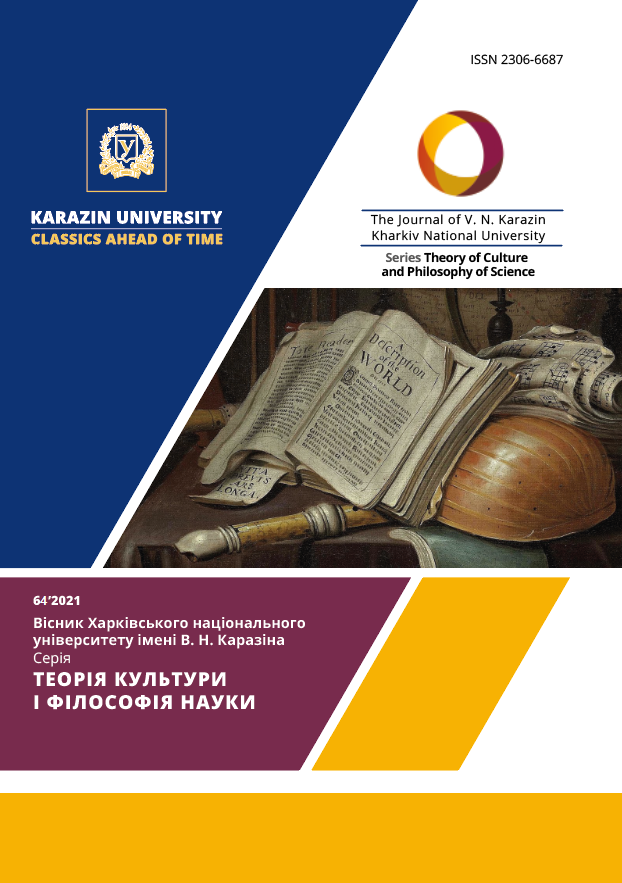THE BIG HISTORY OF EDUCATION. PART ⅖. THE BRONZE AGE. “THE PRISON OF THE WILL”
Abstract
I aim to examine the three dimensions of Bronze Age culture: science based on the procedural knowing of skills (techne); law based on the arbitrary will of the powerful (despotism); and the cult based on the worship of willpower (Pagan idolatry). I hypothesise that the feedback loop between such science, law and cult amounts to the education that teaches humans to rise up against nature and reality as such. Since procedural science empowers us to coerce our environment, to transform the world while avoiding being transformed by it, it issues in education that is divorced from transformation. Since the people who are educated to impose will on their environment value the power to impose will above all else, they legally sanction and religiously sanctify the arbitrary exercise of power – the freedom of choice of the strongest. Procedural knowing and mythological storytelling as a medium of communication teach people servility, subservience to the will of the powerful, and idolatry, the worship of willpower. The law protects the freedom of those who excel at coercion, i.e. the people in power, to do whatever they want. Idolatry teaches people to worship the rulers who have the power to coerce the world. The will of the powerful is thus poised in mid-air, in revolt against its own terms and the natural course of time and change. And the society at the mercy of the ruler’s freedom to choose is the society where the feedback between lawmaking and the ‘news’ about reality is simply no longer there, where there is no self-scrutiny that makes social organisms conscious and creative with regard to their code of conduct, where statesmen “oppress the poor and needy and mistreat the alien, denying them justice”, and “prophets whitewash these deeds for them by false visions and lying divinations” (Ezekiel 22:29, 22:28). In the Bronze Age, science, law and religion failed to do their job because they became subservient to the irrational, unjust and demonic will of the powerful, bound to sanction and sanctify the arbitrary choices of people in power. I use the Hebrew Scripture as the record of human fall into the possessive form of relationship that defines the Bronze Age – into slavery.
Downloads
References
Childe, V.G. (1930). The bronze age. New York: The Macmillan Company.
Commons, M.L. Trudeau, E.J. Stein, S.A. Richards F.A. & Krause S.R. (1998). Hierarchical complexity of tasks shows the existence of developmental stages. Developmental Review 8(3,) 237-278.
Dodds, E. R. (1951). The Greeks and the Irrational. University of California Press. P.14.
Fong Wen ed. (1980). The great bronze age of China: an exhibition from the People's Republic of China. New York: The Metropolitan Museum of Art. Retrieved 13 September 2013.
Freinacht, Hanzi. (2016). The Listening Society. Metamoderna Press. Wroclaw.
Geertz, C. (1973). The Interpretation of Cultures. New York: Basic Books
Graeber, D., Wengrow, D. (2020). The Dawn of Everything. Farrar Straus and Giroux. New York.
Harris, Marvin (1997). Culture People Nature: An Introduction to General Anthropology (7th ed.). Boston: Allyn & Bacon
Higham, C.F.W. (2011). "The Bronze Age of Southeast Asia: New insight on social change from Ban Non Wat". Cambridge Archaeological Journal, 21(3), 365–389. doi:10.1017/s0959774311000424. S2CID 162729367.
Kelleher Bradford (1980). Treasures from the Bronze Age of China: An exhibition from the People's Republic of China the Metropolitan Museum of Art. New York: Ballantine Books
Kuijpers, M.H.G. (2008). Bronze Age metalworking in the Netherlands (c. 2000–800 BC): A research into the preservation of metallurgy related artefacts and the social position of the smith. Leiden: Sidestone Press. ISBN 978-9088900150. Archived from the original on 5 February 2013. Retrieved 2 February 2012.
Lewis, M. (2011). Memoirs of an Addicted Brain: A Neuroscientist Examines his Former Life on Drugs.
Luther, Martin. (1525). De Servo Arbitrio commonly translated as On the Bondage of Will.
Müller-Lyer, F.C.; Lake E.C.; Lake H.A. (1921). The history of social development. New York: Alfred A. Knopf.
Nabokov, V. (1974). Tyrants Destroyed. (In Russian edition: Набоков, В. Истребление тиранов. 1990. p. 393).
Pittman, H. (1984). Art of the Bronze Age: southeastern Iran western Central Asia and the Indus Valley. New York: The Metropolitan Museum of Art. ISBN 978-0-87099-365-7. Archived from the original on 26 December 2013. Retrieved 17 July 2013.
Salzmann, Zdeněk (1993). Language culture and society: an introduction to linguistic anthropology. Boulder CO: Westview Press.
Shweder, R. A., LeVine, R. A. eds. (1984). Culture Theory: essays on mind self and emotion. Cambridge UK: Cambridge University Press.
Wagner, D. B. (1993). Iron and Steel in Ancient China. Leiden Netherlands; New York: E.J. Brill.
Waitz, T. (1863). Introduction to Anthropology. Translated by J. Frederick Collingwood for the Anthropological Society of London. London: Longman Green Longman and Roberts.
Williams, Rowan. (2000). Lost Icons. P. 113.




